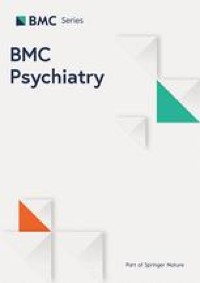How psychedelic medicine could assist with despair

How psychedelic medicine could assist with despair
At a Look Psychedelic medicine being examined as therapies for treatment-resistant despair activate receptors inside mind cells that promote new mind cell connections.
A greater understanding of those mechanisms may result in associated medicine that encourage new mind cell connections whereas avoiding hallucinogenic results.
David Olson/UC Davis
Some sorts of psychedelic medicine, akin to psilocybin and MDMA (ecstasy), have proven promise as therapies for treatment-resistant despair and post-traumatic stress dysfunction. They seem to work by encouraging the expansion of latest connections between neurons within the mind. This capability of the mind to make new connections is named plasticity.
Precisely how these medicine promote plasticity within the mind has been unclear. If the mechanisms could possibly be understood, it is perhaps potential to develop associated medicine that may promote mind plasticity with out inflicting undesirable hallucinogenic results.
Earlier research have discovered that psychedelic medicine encourage plasticity by binding to a mobile receptor in neurons referred to as the 5-hydroxytryptamine 2A receptor (5-HT2AR). However different compounds that bind to 5-HT2AR don’t promote plasticity. These embrace serotonin, a chemical messenger affected by some antidepressant remedies.
An NIH-funded analysis workforce led by Dr. David Olson from the College of California, Davis beforehand developed a sensor that might distinguish which medicine that bind to 5-HT2AR have hallucinogenic properties and which don’t. In a brand new research, the workforce got down to higher perceive why solely sure compounds that bind 5-HT2AR drive plasticity. Their outcomes had been printed on February 17, 2023, in Science.
The workforce first examined the properties of many compounds recognized to bind to 5-HT2ARs. They discovered {that a} compound’s capability to cross a neuron’s membrane and get contained in the cell, relatively than its capability to activate 5-HT2AR, predicted how effectively it boosted the expansion of buildings referred to as dendritic spines. These buildings type connections between neurons.
The researchers subsequent confirmed that clusters of 5-HT2ARs could possibly be discovered inside neurons in addition to on their floor. Compounds in a position to cross into the neurons and bind to those inside receptors induced the formation of dendritic spines. Compounds that might solely bind to the receptors on the neurons’ outer floor, like serotonin, didn’t have the same impact.
These outcomes counsel that the 5-HT2ARs inside and out of doors of neurons activate completely different cell-signaling pathways. When the researchers used {an electrical} present to permit compounds like serotonin to enter neurons, the compounds promoted dendritic backbone development.
Related outcomes had been seen in neurons engineered to make a protein that may pull serotonin into cells. Neurons that took serotonin inside shaped new dendritic spines. Neurons the place serotonin may solely bind to exterior 5-HT2ARs didn’t.
To see whether or not the same phenomenon could possibly be detected in residing brains, the workforce used mice engineered to make a protein that may carry serotonin into neurons. When these mice had been handled with a drug to extend serotonin ranges in a area of the mind, the neurons shaped considerably extra dendritic spines than in mice with out the protein. The mice additionally confirmed enhancements in a conduct check considered related to despair.
“These outcomes give us deeper mechanistic perception into how the receptor promotes plasticity, and should enable us to design higher medicine,” Olson says.
Extra work is required to know tips on how to safely activate the pathways for mind plasticity whereas avoiding hallucinogenic results.
—by Sharon Reynolds


